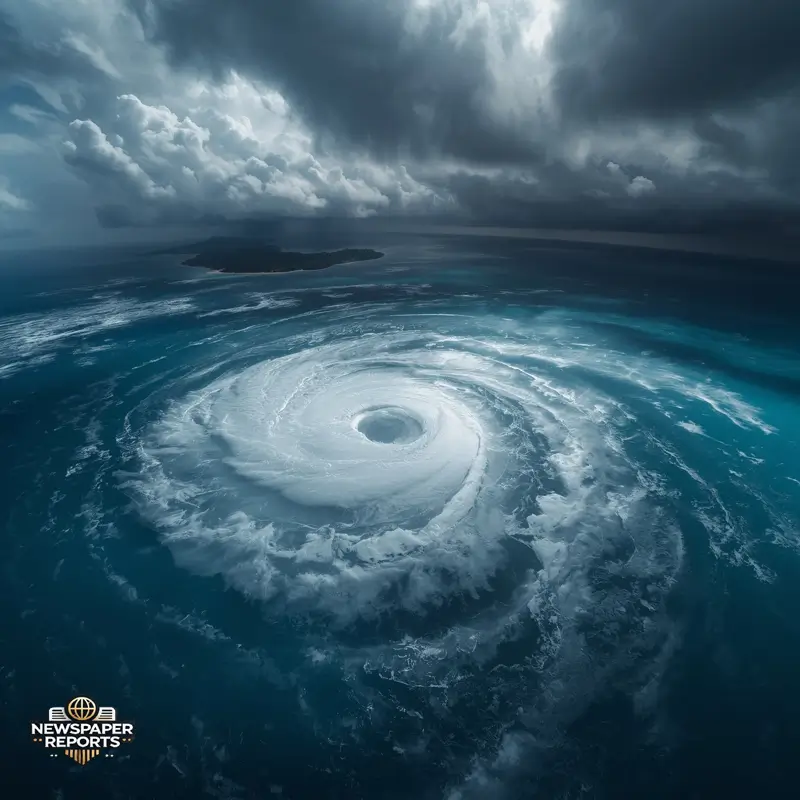Hurricane Melissa: Catastrophic Impact on Jamaica, Call for Global Aid
KINGSTON, JAMAICA – The Caribbean nation of Jamaica is grappling with an unprecedented disaster following the recent landfall of Hurricane Melissa, one of the most powerful Atlantic storms ever recorded. Striking the island on October 28, 2025, as a catastrophic Category 5 hurricane, Melissa has left a trail of devastation, particularly across the western parishes of Westmoreland and St. Elizabeth.

Unprecedented Destruction and Loss of Life
The sheer force of Melissa's winds, which reached up to 185 mph, and the accompanying storm surge, have severely crippled vital infrastructure. Preliminary reports indicate that at least 32 lives have been lost in Jamaica, a figure that officials fear may climb as rescue teams finally reach isolated communities. The damage assessment paints a bleak picture: more than 120,000 structures —including homes, hospitals, and schools—have been damaged or destroyed.
"This Category 5 hurricane has left a trail of extensive damage... amounting to nearly one third of the nation's GDP from last year," said a UN official, highlighting the scale of the economic tragedy.
Areas like Black River in St. Elizabeth and the wider Westmoreland parish have been declared 'ground zero.' Officials estimate that up to 90% of homes in some coastal towns lost their roofs or were completely leveled. Over half the island remains without electricity, and road blockages from landslides and over 4.8 million tonnes of debris continue to hamper the delivery of critical aid.
Agriculture and Tourism Sectors Devastated
The backbone of the Jamaican economy—agriculture and tourism—has suffered a severe blow. Farmers and fishers, already recovering from previous storms like Hurricane Beryl in 2024, are once again facing total loss. Reports from the Jamaica Agricultural Society highlight a devastating impact on mango and other cash crops. The island's crucial tourism sector, centered largely in the western region, is in a frantic race against time to repair hotels and resorts ahead of the peak winter season, which begins in December.
The Race for Relief and Recovery
A massive, coordinated relief effort is underway. The Jamaica Defence Force (JDF) and international aid partners, including the World Food Program (WFP) and the UNDP, are deploying supplies via trucks and helicopters to cut-off areas. The immediate needs are overwhelming: clean water, temporary roofing (tarpaulins), food, and medical supplies.
In a rare step, the Caribbean Catastrophe Risk Insurance Facility (CCRIF) has announced a record payout of $70.8 million to Jamaica, but preliminary damage estimates suggest the financial need is far greater. As officials work to restore communications and power, the focus remains on the displaced—with thousands still housed in emergency shelters.
Climate Change and Future Preparedness
A recent analysis by the World Weather Attribution group suggests that human-caused climate change significantly amplified Melissa's destructive power, increasing its maximum wind speeds and rainfall intensity. This serves as a stark warning, forcing Jamaica and other Caribbean nations to urgently reconsider their adaptation strategies against increasingly powerful and rapidly intensifying tropical cyclones.
The road to full recovery will be long and challenging. Jamaica's spirit, however, remains unbroken as the nation commits to rebuilding "stronger and wiser." Global assistance is urgently required to support the island's recovery and rehabilitation efforts.

